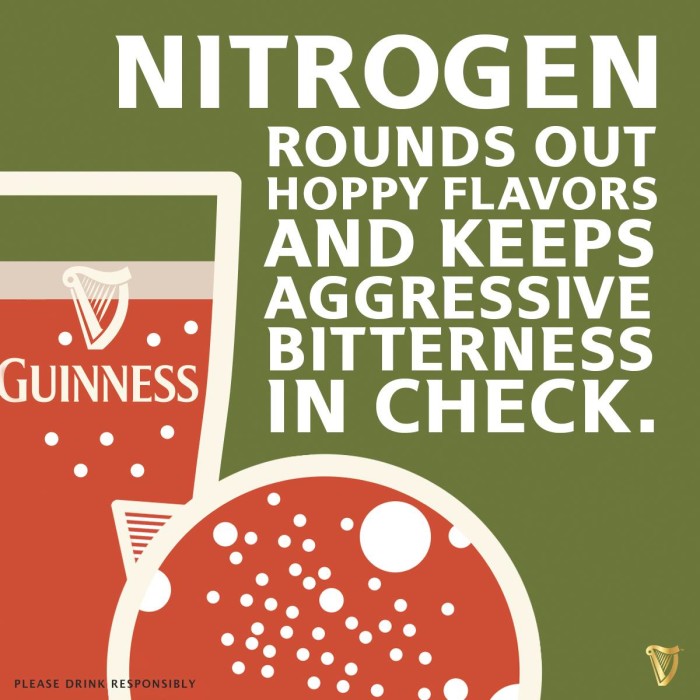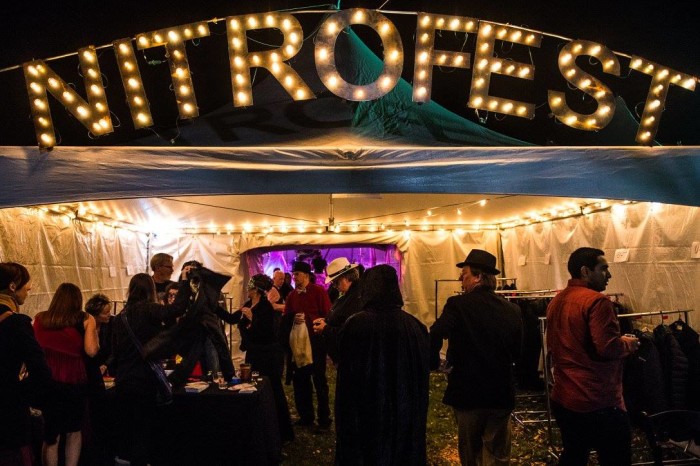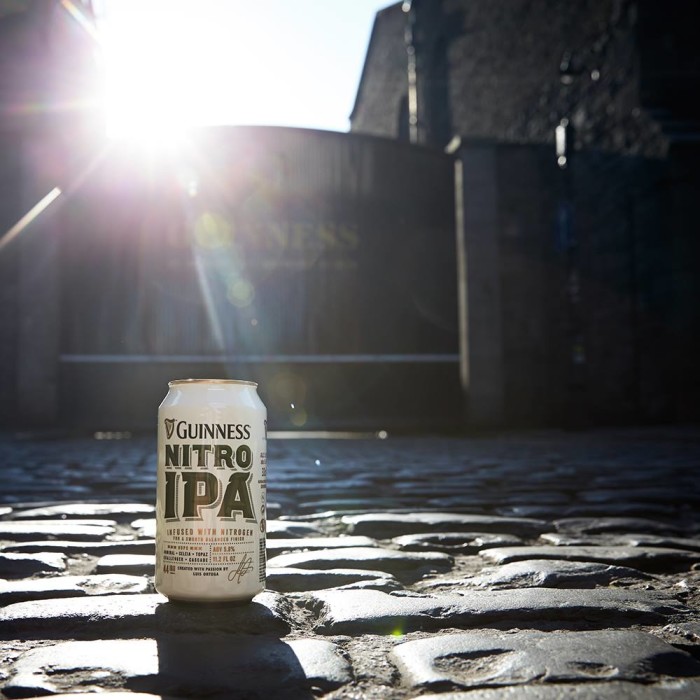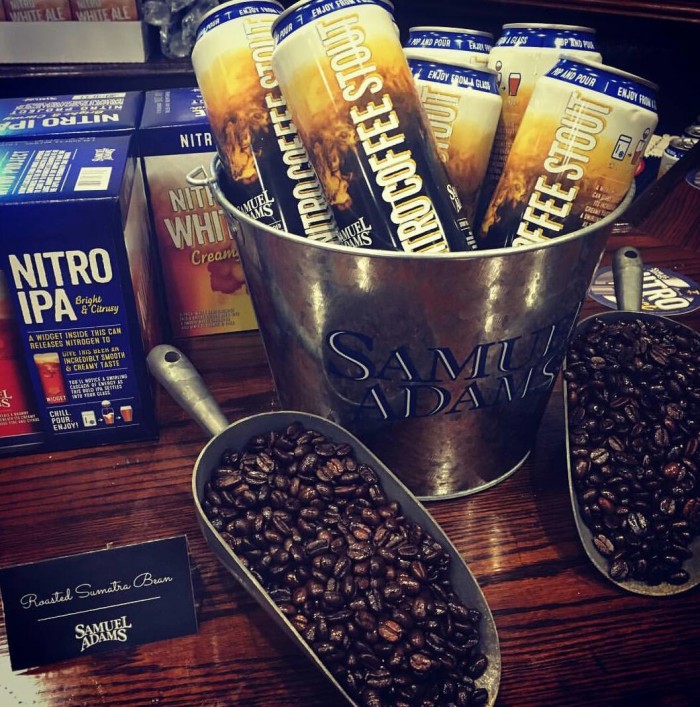What Is Nitro Beer?
We may receive a commission on purchases made from links.
Guinness has company. The iconic Irish brewery brought nitrogen-carbonated beer to the masses beginning more than a half-century ago and has become understandably synonymous with the approach in the decades since.
Now, though, a number of American-made nitrogen (or nitro) beers are widely available for the first time, thanks largely to recent releases from the biggest craft brewery in the land. The Boston Beer Co. released three Samuel Adams nitro beers last month: a wheat ale, an India pale ale and a stout.
There is a veritable textbook behind the effects on beer of nitrogen versus carbon dioxide, the more widely used gas for carbonation. The CliffsNotes version is that nitrogen produces a smoother mouthfeel and texture than CO2 as well as a cascading effect for the carbonation — the bubbles appear to be falling rather than rising. Much of this has to do with how nitrogen reacts as it dissolves in water (short version: it doesn't react, meaning its effects remain much more noticeable, a more sustained head being one of those effects). Also, the bubbles in most nitro beers are, in fact, around 70 percent nitrogen and 30 percent CO2.
Just as it alters the pour and the look of a beer, nitrogen also undeniably makes it taste smoother and often fuller, imparting an almost milkshake-like texture eons away from the snap, crackle and pop of a CO2 feel.
Wider use of nitrogen in beer began in the late 1950s, when a team at Guinness led by mathematician Michael Ash developed a pouring system that could produce, and easily reproduce, a perfect pint of draught beer — in this case, Guinness' stout. The "key technical breakthrough" of Ash's team was that nitrogen, according to Bill Yenne's Guinness: The 250-Year Quest for the Perfect Pint.
Introduced in limited release in the summer of 1959, to coincide with the 200th anniversary of the signing of the brewery's Dublin lease, the Guinness pouring system spread throughout the British Isles and Ireland, and then the world, during the following decade.
Whether or not nitro beers are better than their CO2 counterparts, or vice versa, is in the palate of the beholder. The beers will certainly feel different. The only way to discover whether they actually taste different is to sample several of them (hard work, this) — except that aside from Guinness, Sam Adams and a handful of others, nitro beers are much more difficult to find than the CO2 variety.
Case in point: The Left Hand Brewing Co., out of Longmont, Colorado, one of the pioneers of American-made nitro beers, hosted the second annual Nitro Fest in November 2015, the biggest gathering of its kind in the U.S. It featured one-off offerings from big names such as Dogfish Head, which infused its marvelous 90 Minute IPA with nitrogen, and limited releases from other breweries.
Other major players, including Stone and New Belgium, have also produced nitro beers, though usually in similarly small quantities and not regularly. Right now, Guinness still dominates the nitro niche. That could all change drastically in 2016, thanks to the Samuel Adams rollout.
In the meantime, here are a few widely available nitro beers to give you a jump on the trend.
Guinness Nitro IPA
Guinness Brewery, Dublin, Ireland
Guinness is best known for its opaque, slightly sweet, mildly bitter stout. In fact, it's dang near omnipresent everywhere beer is sold. So when the brewery released an India pale ale in late 2015, it caused a stir. The Nitro IPA is on the (very) milder side of the popular style, with the most pronounced bitterness coming at the finish. It's just under 6 percent alcohol by volume and predictably smooth due largely to the nitrogen. (Full disclosure: I sampled several other smaller offerings from Guinness during a trip to Dublin that the brewery's parent, Diageo, paid for.)
Left Hand Nitro Milk Stout
Left Hand Brewing Co., Longmont, Colorado
The brewery has been working with nitrogen since the 2000s, though it really took a pioneering step onto the commercial stage with the September 2011 debut of its Nitro Milk Stout in bottles. The nitrogen seems perfectly suited for the style, making a creamier, richer beer that much more so. The nose is all roasted nuts, and the finish is surprisingly thin — as in tastes great, less filling — given the thickness overall. Six percent ABV, a solid dark beer.
Left Hand Hard Wired NitroLeft Hand Brewing Co., Longmont, Colorado
Gorgeously smooth, a really well-balanced beer. It pours cleanly, with the coffee aroma giving way to a more sugary caramel taste, with a lingering finish — toffee, coffee, caramel, caramelized sugar, the works. All of it, though, blends nicely, with nothing overwhelming anything else. Officially a coffee porter, it's 6 percent ABV.
Samuel Adams Nitro White Ale
Boston Beer Co., Boston, Massachusetts
Dry spiciness dominates the aroma, and there is a lemon-orange flavor throughout. Thin (again, in a good way), with the sort of clean finish that you don't often get in a wheat beer. Not at all bitter, either, and 5.5 percent ABV. Very sippable.
Samuel Adams Nitro IPABoston Beer Co., Boston, Massachusetts
All floral hoppiness on the nose, with a nice, mellow taste, due (we think) less to the nitrogen than to just the right balance in the ingredients, including the six hop varieties used. And although it's 7.5 percent ABV, the alcohol did not come roaring through as with other, stronger American-made IPAs. Hoppy, but not a hop bomb, if that makes sense.
Samuel Adams Nitro Coffee StoutBoston Beer Co., Boston, Massachusetts
Like Left Hand's milk stout and coffee porter, Sam Adams' coffee stout seems made for nitro, which only accentuates the chocolaty velvetiness. There's a roasted coffee-bean aroma and flavor throughout, but it's not overwhelming. In fact, this one sips like any other finely made stout. Whatever its signature ingredient's association with breakfast, we see this new offering as a perfect nightcap.
Tom Acitelli is the author of The Audacity of Hops: The History of America's Craft Beer Revolution and the new fine-wine history American Wine: A Coming-of-Age Story.





